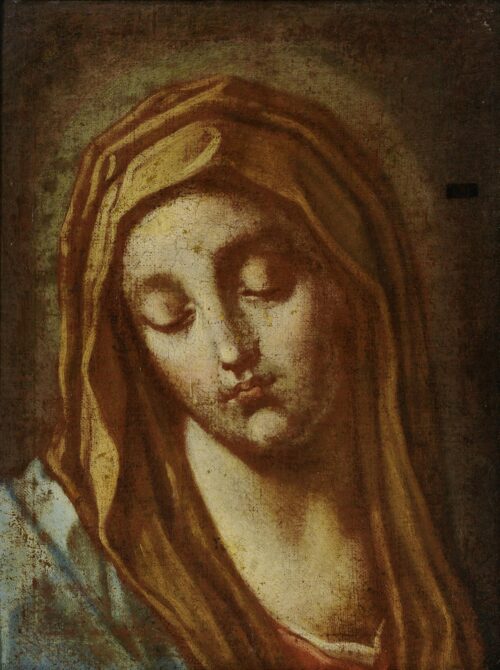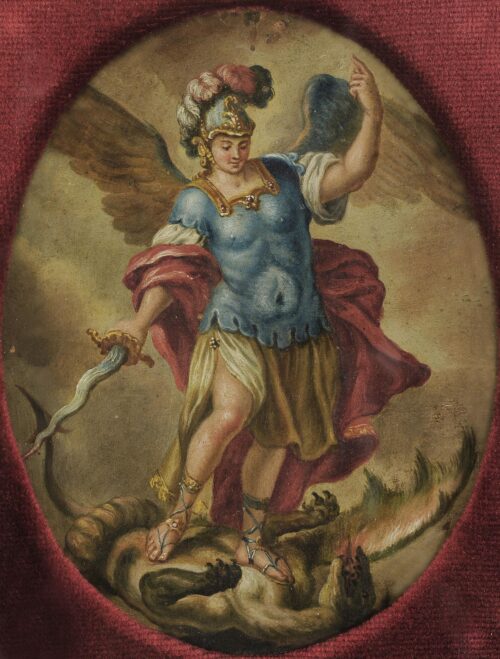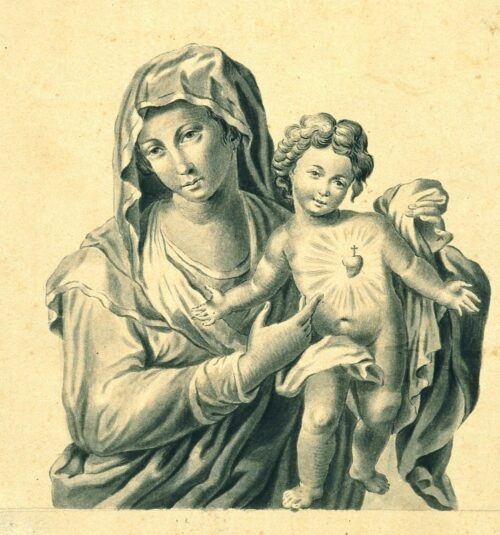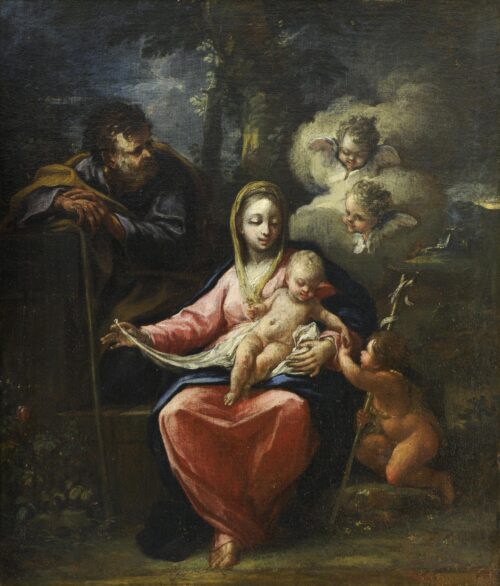
Doxaras Panagiotis (1662 - 1729)
The Virgin Mary, ca 1700
According to the prevailing point of view, he was born in Koutifari, Mani, but in 1664/1665 his family settled in Zakynthos, which was then under Venetian occupation. There in 1685 he took lessons in icon painting under the Cretan painter Leo Moskos. Among his first known works is numbered his icon Christ as High Priest which he painted in 1691 for Our Lady of the Angels church in Zakynthos, later painted over by Nikolaos Koutouzis. In 1694-1699 he took part in the wars of the Venetians against the Ottomans and because of that was awarded the Order of Knight, while later he was also ceded land in Lefkada. From the turn of the century until 1704 he lived in Italy where in all likelihood he studied painting. Upon his return he settled in Venetian-occupied Kalamata where he stayed until 1715, the year in which the area came under Turkish domination. In 1719 he painted, in line with western models, the “Portrait of Count Matthias von der Schulenburg” (Athens, Private Collection); von der Schulenburg was the German Commander-in-Chief of the Venetian forces during the siege of Corfu by the Turks (1714-1718). This work, signed and dated, is numbered, along with the “Portrait of Schulenburg” in the Collection of the E. Koutlidis Foundation (1725), among the few unquestioned examples of the artist’s work. In 1727 he painted seventeen compositions for the urania (ceiling) of the church of Ayios Spyridon in Corfu, which were subsequently replaced by copies done in 1853-1871 by N. Aspiotis. Two of his eight children, Nikolaos and Dimitrios, also turned to painting.
This painter was also involved with the study, translation and compilation of theoretical writings on art. Thus in 1720 he translated in Italy the essay by Leonardo da Vinci “Trattato de la Pittura” (On Painting) and in 1724 he appended to the work the relevant texts of Leon Battista Alberti, Andrea Pozzo and others. In 1723 he completed Περί Ζωγραφίας (On Painting) which at first was thought to be an original work, but which more recent investigation has shown to be an anthology of translations of Italian texts from the 17th and 18th century.
The theoretical and artistic work of Panagiotis Doxaras, who launched Ionian island painting, also signals the starting point of modern Greek art by detaching it from the Byzantine and post-Byzantine traditions and getting it to adopt the principles of western European painting, both on the level of technique and the level of style, not to mention the broader perception of art itself.

The Virgin Mary, ca 1700
Portrait of Count Schulenburg, 1725

The Archangel Michael

Virgin and Child

The Holy Family, ca 1700

We use cookies to make our site work properly, to personalize content and ads, to provide social media features and to analyze our traffic. We also share information about how you use our site with our social media, advertising and analytics partners. Read the Cookies Policy.
These cookies are necessary for the website to function and cannot be switched off in our systems. They are usually only set in response to actions made by you which amount to a request for services, such as setting your privacy preferences, logging in or filling in forms. You can set your browser to block or alert you about these cookies, but some parts of the site will not then work. These cookies do not store any personally identifiable information.
If you disable this cookie, we will not be able to save your preferences. This means that every time you visit this website you will need to enable or disable cookies again.
These cookies tell us about how you use the site and they help us to make it better. For example these cookies count the number of visitors to our website and see how visitors move around when they are using it. This helps us to improve the way our site works, for example, by ensuring that users find what they are looking for easily. Our website uses Google Analytics for statistics reporting.
Please enable Strictly Necessary Cookies first so that we can save your preferences!